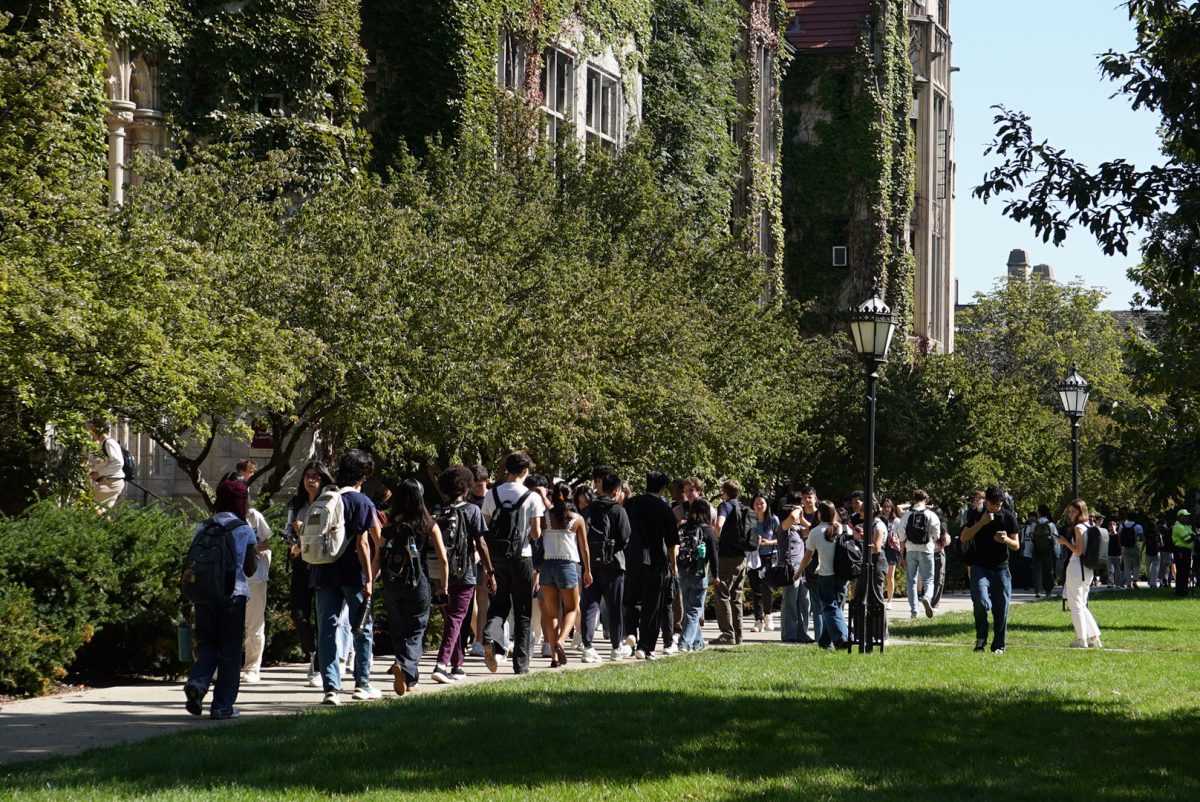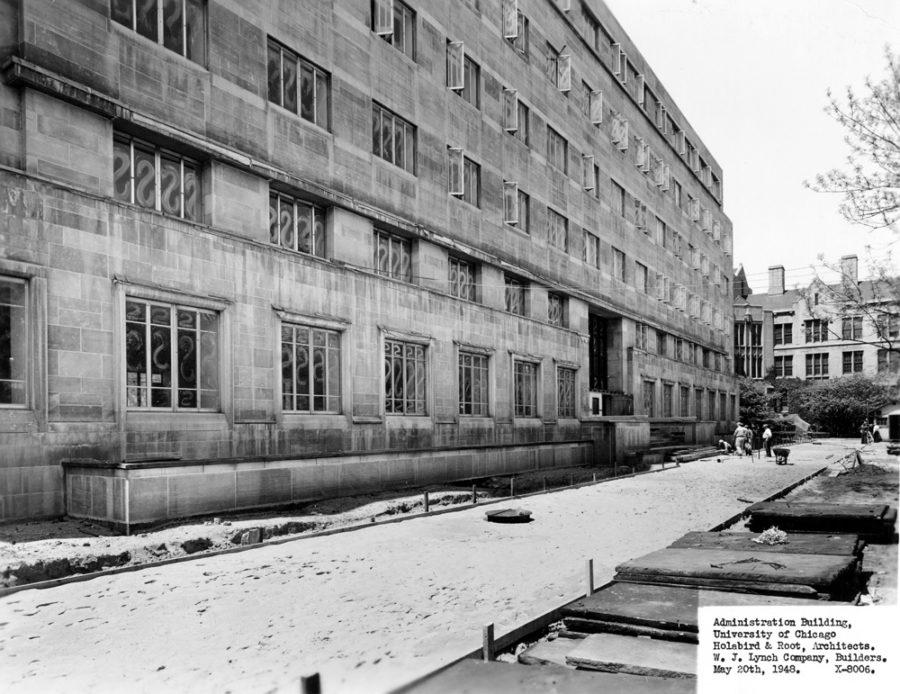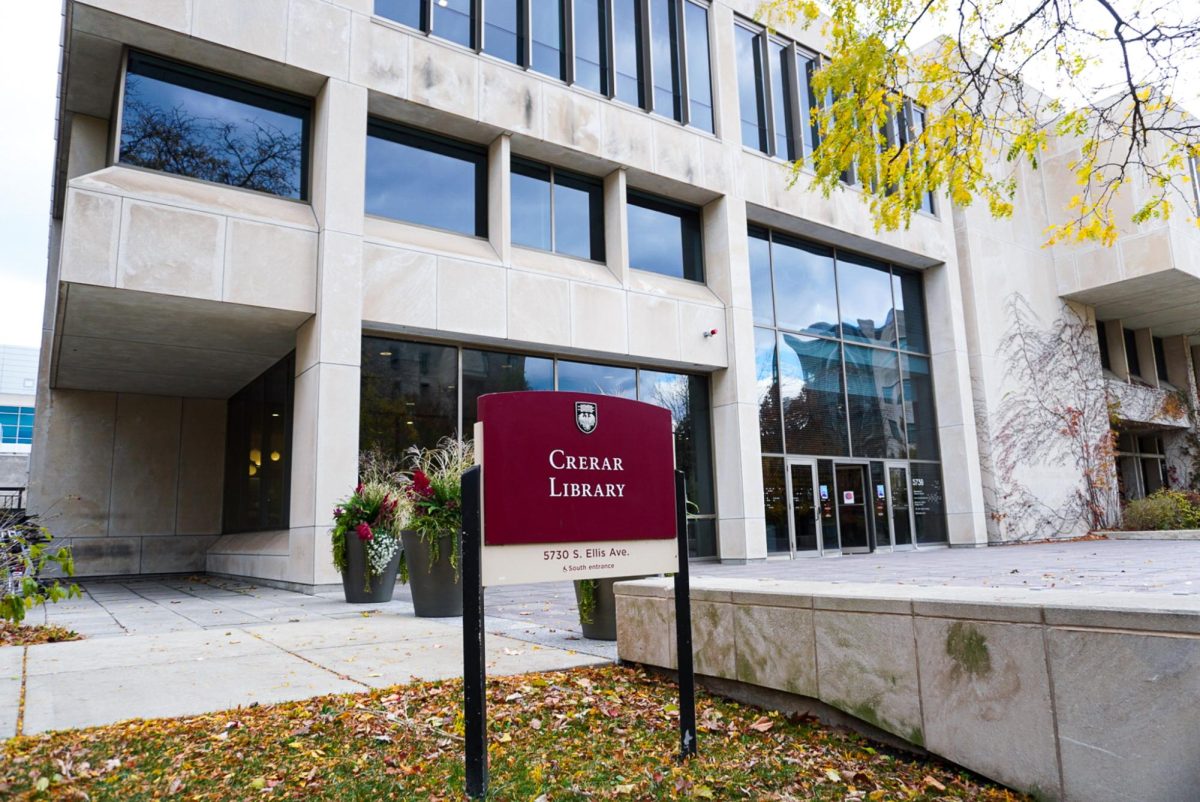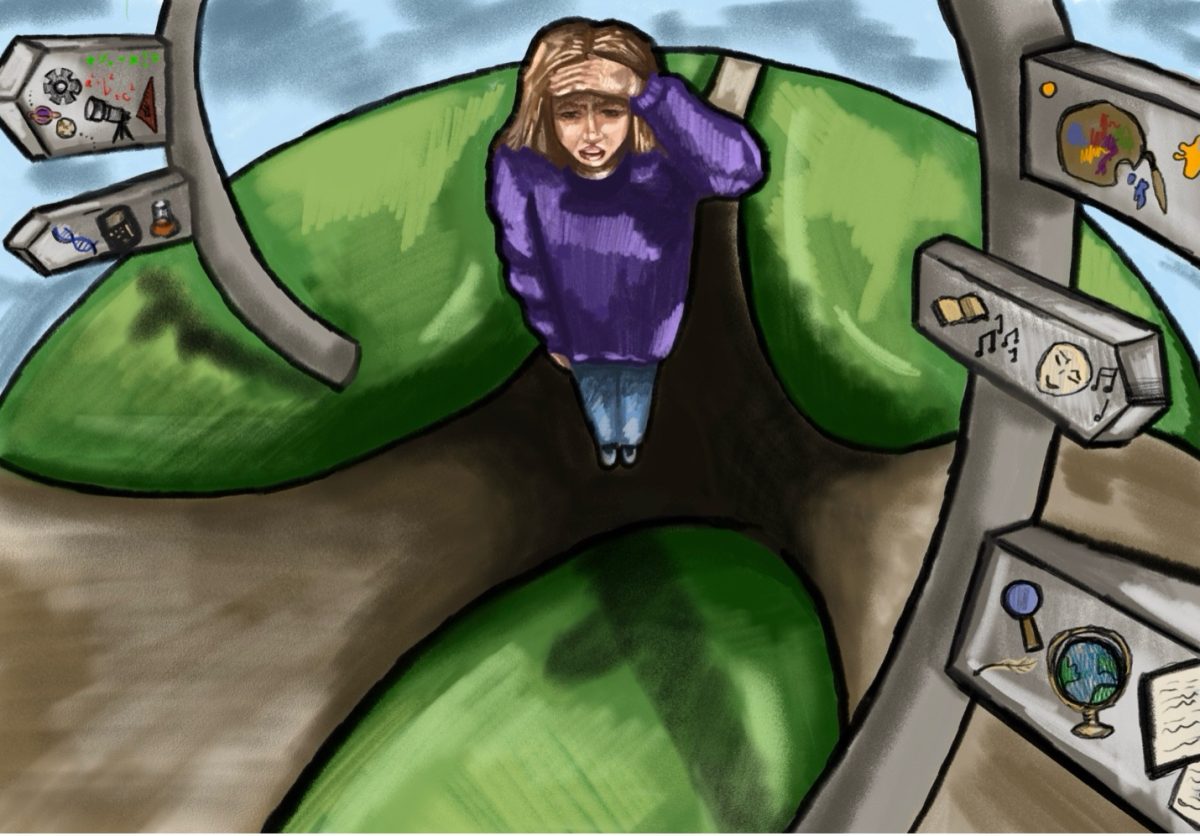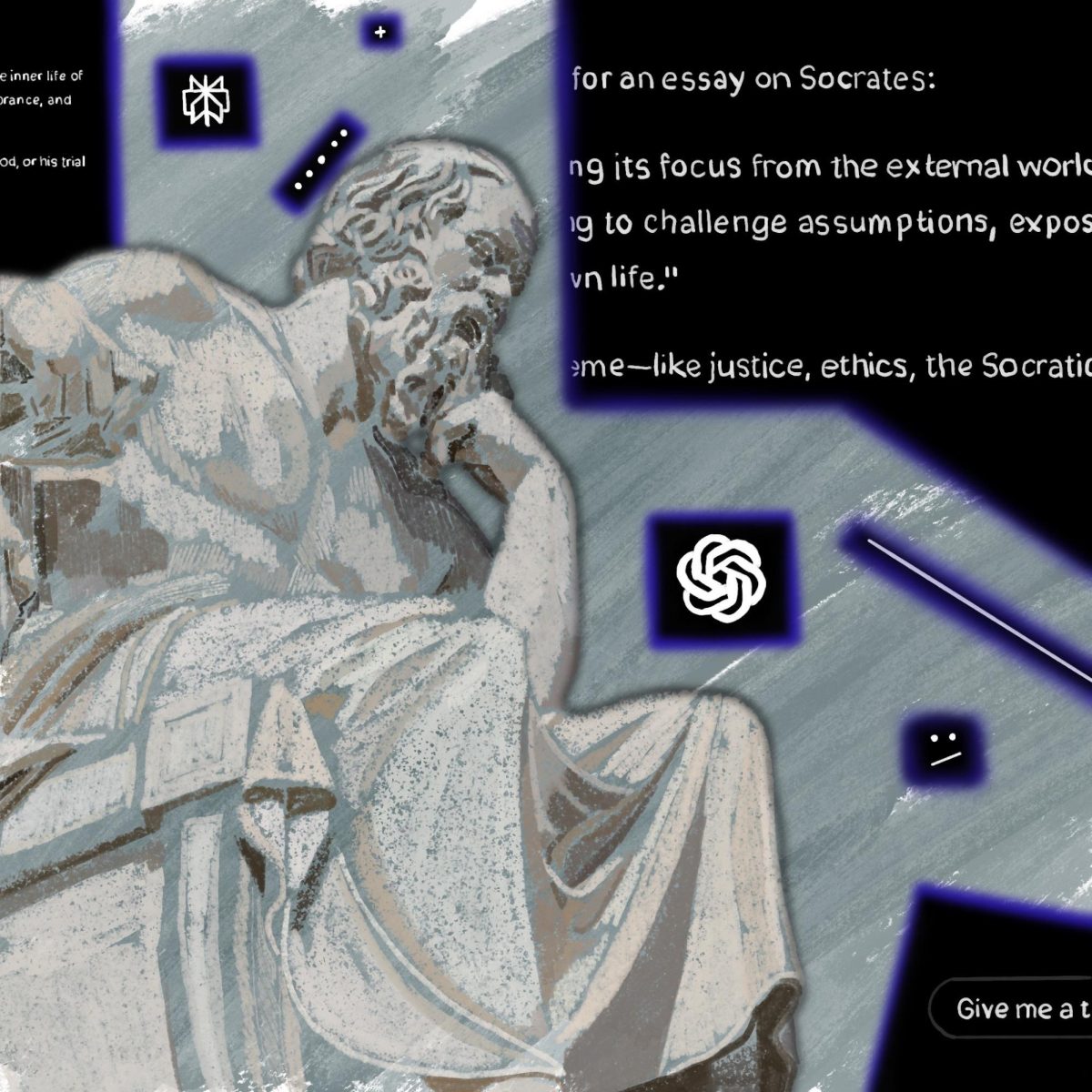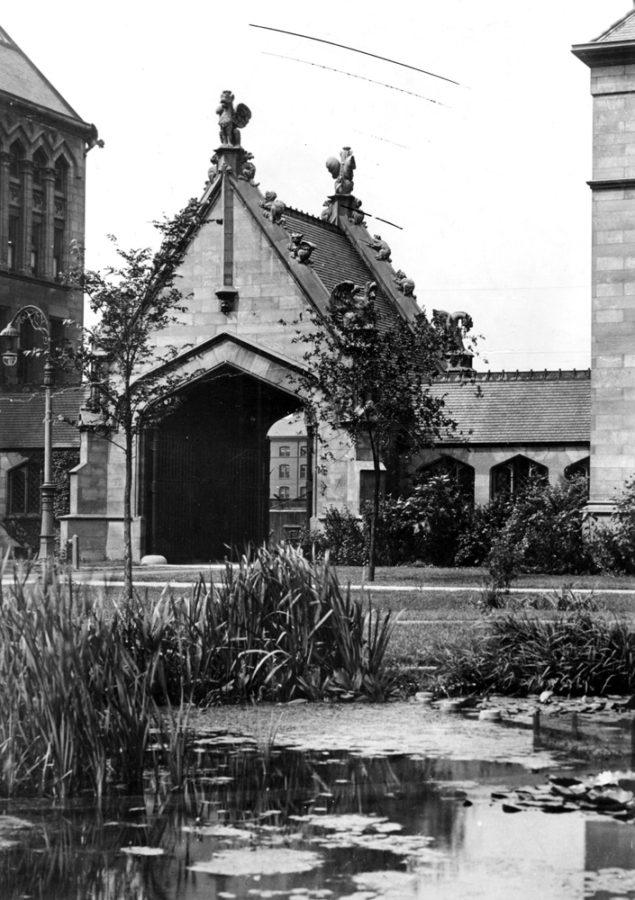Transportation isn’t just a matter of logistics when it comes to college campuses. The ability to get from one place to another is directly tied to student success, environmental impact, and relationships with nearby communities. As a result, transportation policy is one of the clearest expressions of a university’s values. At the University of Chicago, making campus mobility more accessible, safe, and climate-friendly would not only improve our quality of life but also position the University as a pioneering institution in effective campus transportation.
Many of our decisions as students revolve around mobility. What time do I need to wake up to make my 8 a.m. class? Is an internship downtown realistic? Should I rent the apartment five blocks away from campus or the one 20 blocks away? These choices, both big and small, are oftentimes decided by transportation options and constraints. The amount of time we can spend studying, socializing, and participating in extracurricular activities is dependent on our ability to get from one place to another. In that sense, transportation policy plays a key role in shaping our college experience.
Campus transportation is also heavily involved in the nationwide push for climate responsibility. Institutions of higher education often have large carbon footprints, with transportation being a major source of these emissions. In recent years, pioneers in clean transportation policy have shown that change is possible through programs ranging from electrifying shuttle fleets to building bike-friendly infrastructure. The implementation of such initiatives is a step in the right direction for campus sustainability.
And, of course, universities do not operate in isolation. The benefits of reliable and efficient transportation extend to neighboring communities, oftentimes improving safety and boosting local economies. At the same time, weak or limited policies can reinforce inequities. With strong transportation policy, colleges have the opportunity to strengthen relationships between students, staff, and the neighborhoods they call home. In short, a university’s transportation policy is far more relevant than it may initially appear.
Maximizing the Benefits of Our Shuttle System
One of the most common methods of transportation offered on campuses nationwide is university-sponsored shuttles. At UChicago, the UGo shuttles travel around Hyde Park and also provide rides downtown and to nearby Metra and Chicago Transit Authority (CTA) stations. Compared to other University-based transit options, shuttles operate at standard hours and offer students unlimited free rides, making them a crucial tool for attending classes. When done well, they offer nighttime safety, economic equity, and reliable mobility no matter the weather.
Improving the UGo shuttle system’s efficiency and accessibility is one of the clearest ways to improve campus transit access. Currently, some of the biggest challenges facing UChicago’s shuttle system (as well as other university shuttle systems) are low ridership and a large carbon footprint.
Providing users with the necessary tools to learn the routes and schedules of the shuttle system is a key factor in increasing ridership. At UChicago, the Passio GO! app, intended to help track the UGo shuttles, has an unintuitive user interface, discouraging potential riders who are unfamiliar with the system. Additionally, some routes fail to align with student travel patterns, leaving shuttles unused while costs remain high.
Innovative and technical solutions could ensure that the shuttle system is more reliable, making it a more desirable form of transit. Booth School of Business professor Donald Eisenstein told members of our caucus about the common problem of bus bunching, where a single delayed bus has to pick up a greater number of passengers at every stop than the bus behind it, causing the delayed bus to fall farther behind and the next bus to catch up. A solution is to measure the times with the most ridership, such as class changes, and add more shuttles for those specific times. A greater number of shuttles at busy times for certain routes could reduce the impact of one delayed shuttle, as it will only create a short gap between shuttles.
It is also important to recognize the large carbon footprint of campus shuttles. Recently, Stanford began electrifying its university-owned buses, with about 90 percent of the miles driven by its Marguerite shuttles now being electric. Similar initiatives have been taken by other universities nationwide, proving that universities can align student mobility with commitments to sustainability. Outside of transit, UChicago has shown an interest in championing sustainability around the world by developing the Institute for Climate and Sustainable Growth. Yet there is still progress to be made on our own campus, and electrifying the shuttle fleet would be a major step in the right direction. As fleet electrification is still in its early stages nationwide, UChicago has an opportunity to become a leader in the field of sustainable campus transportation.
Improvements in All Types of Mobility
While university-sponsored shuttles are a widespread form of transportation across American institutions of higher education, they cannot power campus mobility alone. Effective transportation policy does not focus solely on cars, buses, and trains, but rather seeks to increase all types of mobility. Even just a walk between campus buildings can be significantly impacted by mobility decisions: Is there a safe, conveniently placed crosswalk? Is the sidewalk flooded? When all aspects of a transportation system are carefully considered, the ease of mobility substantially increases.
Walking and biking are the most eco-friendly transportation options, though some small improvements could significantly increase pedestrian and cyclist mobility on and around UChicago’s campus. Bike-shares are accessible through several Divvy bike stations, and students can purchase a Divvy membership at a reduced cost. Yet a lack of bike lanes makes biking dangerous for many. The walk across the Midway is hazardous due to high-speed traffic and limited pedestrian visibility, and other walkways on campus often flood badly after rain. Though creating bike lanes and safer pedestrian conditions requires investment—and collaboration with Chicago officials, which takes time and patience—creating a safer environment for these self-reliant transportation methods is well worth it.
Building Community Through Transportation Partnerships
University partnerships with local transit agencies are also fairly common. Like UChicago, dozens of Chicagoland institutions use the Ventra U-Pass system, providing unlimited CTA access for a flat fee, paid for with tuition. In addition to U-Pass, students can register for a free Metra “Day Pass 5 Pack” each academic year. UChicago has also subsidized the CTA’s 171, 172, and 192 bus routes since 2000, which provide service around the Hyde Park area (in the case of the 171 and 172) as well as transportation to downtown Chicago (in the case of the 192). In a city as big as Chicago, this partnership is central to connecting the University with the broader community. This form of transit doesn’t just help students commute but also enriches our education and allows students to experience the cultural and social life of Chicago. It is also essential for expanding faculty and staff job opportunities for people who live in neighborhoods other than Hyde Park. However, there is still room to grow. UChicago should expand its collaboration with Chicago public transit, advocating for increased L access on the South Side (such as reopening Green Line stops near campus), more frequent bus service to and from downtown, and complimentary Metra access for University affiliates. Strengthening these connections would attest to the University’s role as a part of the city, rather than an island within it.
UChicago could also benefit from partnering with nearby universities to support its bus system. This is not unprecedented, as Carnegie Mellon University (CMU) and neighboring University of Pittsburgh (Pitt) allow students and faculty to use each other’s bus systems for free. Although UChicago is not as close to other universities as CMU is to Pitt, the popular Downtown Connector could be run more frequently in collaboration with other South Side institutions. such as the Illinois Institute of Technology, to increase ridership and lower costs.
Finally, many universities are also exploring partnerships with rideshare companies. Stipends or subsidized rides for services such as Uber, Lyft, and Via are becoming increasingly popular on college campuses, primarily for promoting nighttime safety. In 2024, UChicago began working with Via to provide unlimited rideshares around campus between the hours of 5 p.m. and 4 a.m. While these rides allow for greater flexibility and dependability, they also raise economic concerns and worries about overreliance on private firms. If UChicago were to continue to improve its alternatives to Via, the service could remain just one aspect of the University’s larger mobility plan. In the long run, investments in shuttle services, pedestrian and biking infrastructure, and public transit partnerships would allow for Via to become a fallback rather than a default. Rideshare options should complement, not replace, the greater campus transportation ecosystem.
Shaping the UChicago of the Future
Although we have outlined many areas for improvement in UChicago’s campus transportation policy, it is important to recognize some of the progress that has already been made. Over the past 15–20 years, the University has made adjustments to mobility options in response to student use—or lack thereof. For example, UChicago used to subsidize two other CTA bus routes (the 173 and 174), but these subsidies stopped in 2009 due to lack of ridership; the South Route UGo night shuttle was recently limited to 12 a.m. for the same reason; and the popular Lyft program was replaced by Via to better fit the fiscal and organizational needs of the University. These changes demonstrate that the University’s transportation system is adaptable.
Just as the University of Chicago is a leading research institution, it also has the capacity to set the standard for campus transportation policy. Addressing shortcomings with the shuttle system, bike infrastructure, and pedestrian mobility will require time and resources, but the benefits of doing so will be invaluable. Better mobility means safer commutes, stronger ties to the city, lower environmental impact, and a higher quality of life.
However, creating effective campus mobility requires effort and involvement from the student body as well. That means speaking up when parts of the system don’t work and showing up to support the services when they do. After all, mobility is central to our college experience. Transportation policy isn’t just about getting from point A to point B; it’s about shaping the kind of university we want for the future.
The UChicago Democrats Transportation Policy Caucus aims to meaningfully impact our community through local policy collaborations aimed at developing and implementing progressive transportation solutions. Please reach out to ucdemstransportation@gmail.com if you are interested in joining.



